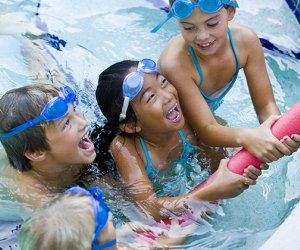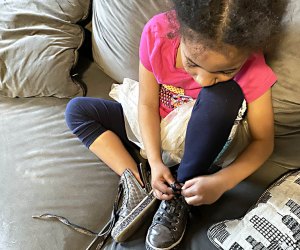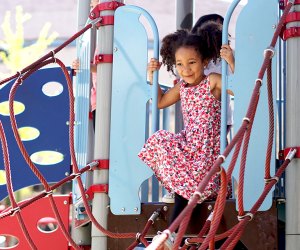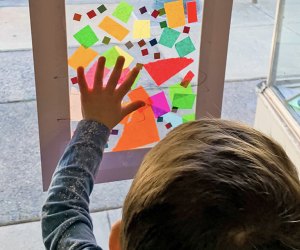8 Tips for Teaching Your Child to Ride a Bike Without Training Wheels
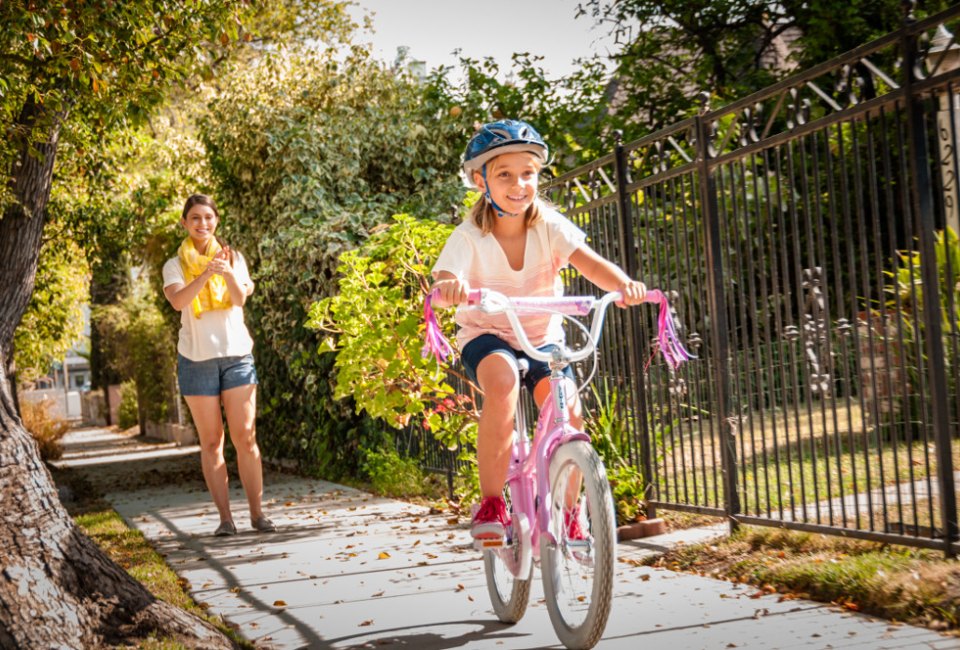
Learning how to ride a bike without training wheels is a major milestone in a child’s life, and while all kids develop at their own pace, the average age to master this skill is somewhere between five and seven years old. That’s good news for my seven year-old son, who wants to go from four wheels to two sometime this summer. I must admit, though, that we’re both a little nervous about the process. He’s worried about falling and getting hurt, while I’m stressed trying to figure out the best way to teach him. And I’m happy to find I’m not the only one: A poll conducted by Schwinn found that 55 percent of parents are nervous about teaching their kids how to ride, and 36 percent wish someone else would do it for them!
But before I source this parenting chore out, I decided to ask some pros for their best advice on the subject and discovered these eight tips for teaching my son how to ride without either of us having a meltdown.
OUR LATEST VIDEOS
1. Make sure your child wants to do it. When it comes to learning how to ride, the child should have more interest than the parent. “Sometimes kids are pushed into an activity when the child is not ready. This usually turns into an uphill battle with no winner,” says Steve Finkelstein, founder of Professor Pedals, which offers individual and group bike riding lessons on Long Island, as well as in Westchester and Northern New Jersey.
It’s also important to factor in the child’s maturity, which is critical in areas of safety and control. After all, a bicycle is a vehicle and needs to be treated with respect—not to mention also having respect for other riders, pedestrians and vehicles.
2. Practice balance. It’s best to start testing a child’s balancing capabilities before he gets on a bike. “The child’s ability in other activities that have balance and risk taking components—riding a scooter, karate, ice skating, gymnastics, skiing, etc.—are good signs that they are ready to learn to ride,” says Finkelstein.
3. Choose the right bike. Parents often purchase a bike with the idea that their child will grow into it, but the bike is then too big and difficult for the child to control, says Katie Needham, director of retail activation for Schwinn. The Madison, WI-based company recently launched a line of Smartstart bikes, which have been designed to better fit a child’s body and riding needs.
Here’s a guideline for choosing the best bike: Measure the height of the child to determine the correct wheel size of the bike. For a child who is 28” to 38” in height, a bike with a 12” wheel diameter should be best. For a child between 38” to 48” in height, the best bet is a bike with 16” wheels. A taller child who is 42” to 52” inches tall would be able to ride a bike with 18” wheels, and a child 48” to 60" inches tall should be ready for a bike with a 20” wheel diameter.
4. Find the right location. The best place is an area where the child won’t be embarrassed, so while his local school or park may be the most convenient choice, it can also be distracting if he runs into some friends there. Finkelstein suggests going to a neighboring town so this won’t happen.
5. Teach how to brake first. Learning how to stop the bicycle is crucial before teaching a child how to move it. “Introduce how brakes work, where they are and how to use them,” says Finkelstein. “Teaching these defensive techniques in brake usage and how to effectively place feet quickly to the ground in a wide position will empower a child with skills to prevent or minimize falls, and that will make him feel more confident.”
But what about a child who is super afraid of falling? Finkelstein suggests asking the child how long he has been walking. Chances are, he's tripped and fallen a few times—did he stop walking as a result? Then go on to explain that the child is protected from getting really hurt with a bike helmet and pads, and that Mom or Dad will be there the whole time to keep him safe.
6. Take the pedals off. While some parents might shell out $100 or more for a balance bike, there’s really no need to make that extra purchase. Instead, just do what Mark Rust, a dad from New Paltz, NY, did when he taught his two girls how to ride—he simply took the pedals off their bikes and lowered their seats so their feet could easily touch the ground. “They would then glide down the driveway on their own. Whenever they lost their balance, they could simply put their feet down. At first it would be inches at a time, then feet, then suddenly the whole driveway. Then we put the pedals back on, and they learned to ride very quickly.”
7. Go slow. Stick to manageable increments. If a parent is pushing one hour of lesson time, she may be doing too much. Be sure to take breaks as needed, and remember, if the adult is getting tired, so is the child.
8. Be patient. The median time a child needs to learn is three to four weeks. “If the lessons are turning very emotional or stressful, or if the child loses interest, then it is time to take some time off,” says Needham. “Let a few weeks go by and then give it another shot.”
I'm hoping that—armed with these tips—my son's goal will be achieved this summer. Happy riding!
Photo Courtesy of Schwinn







